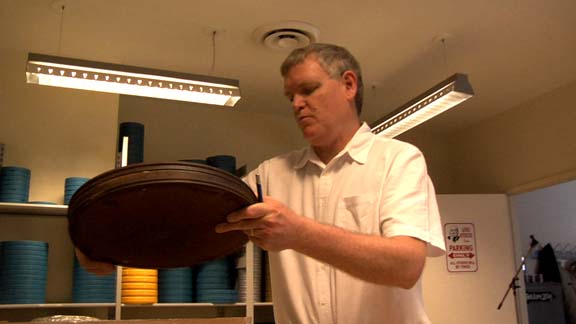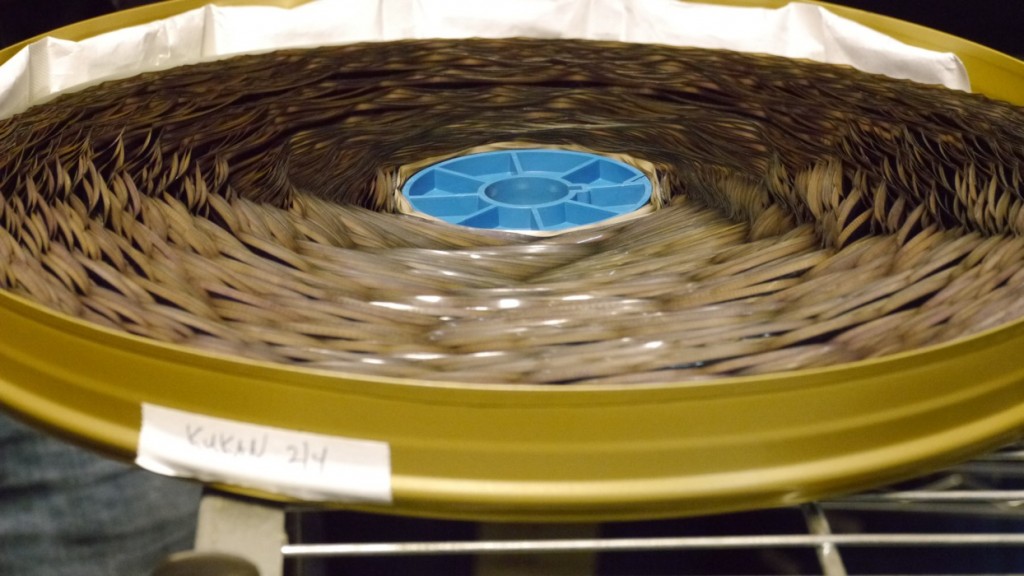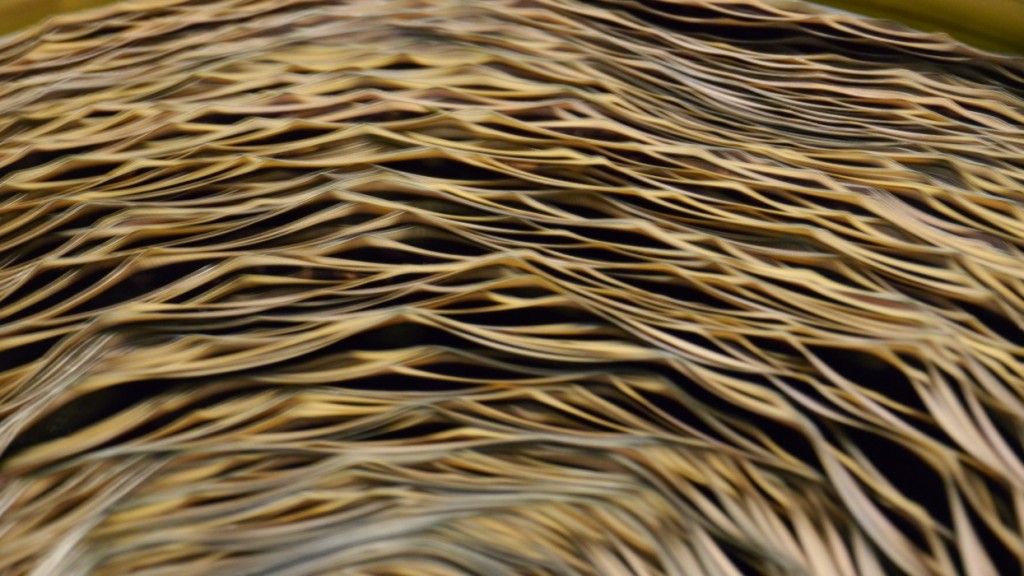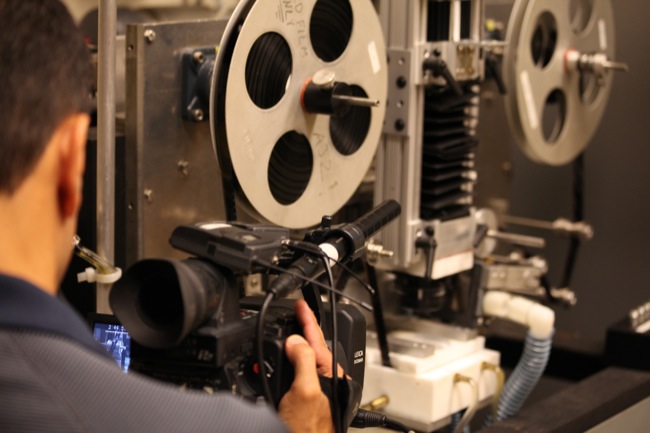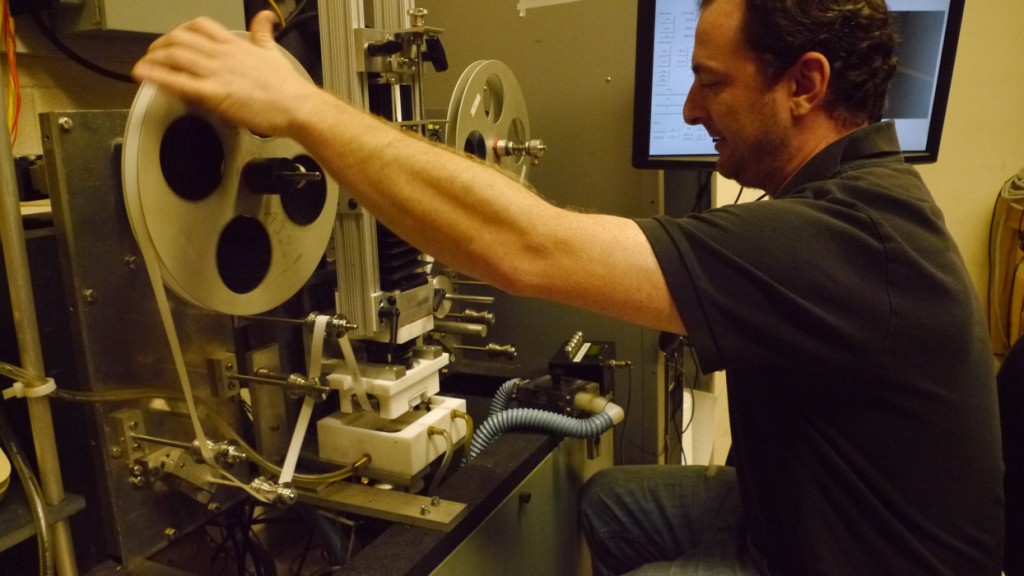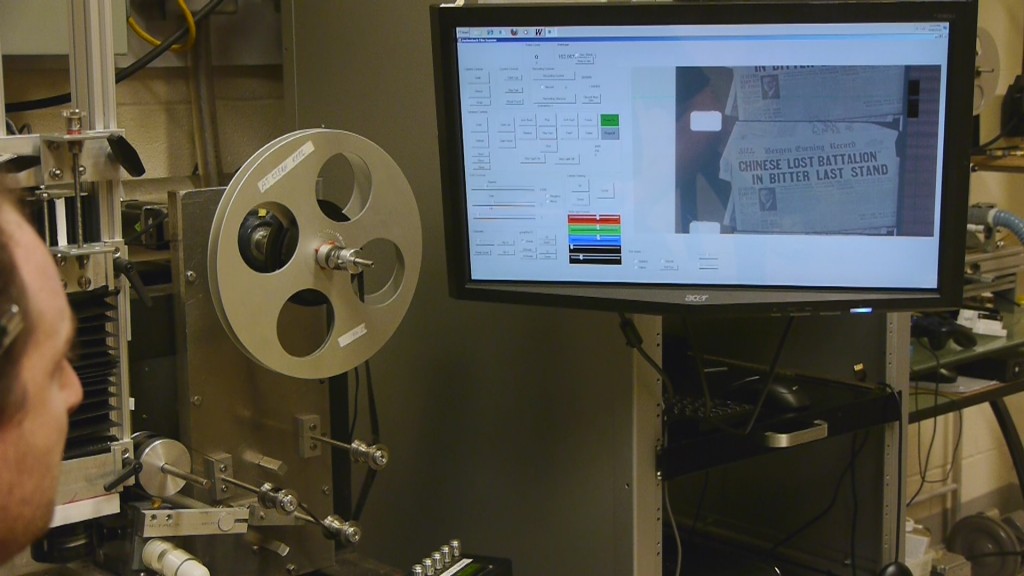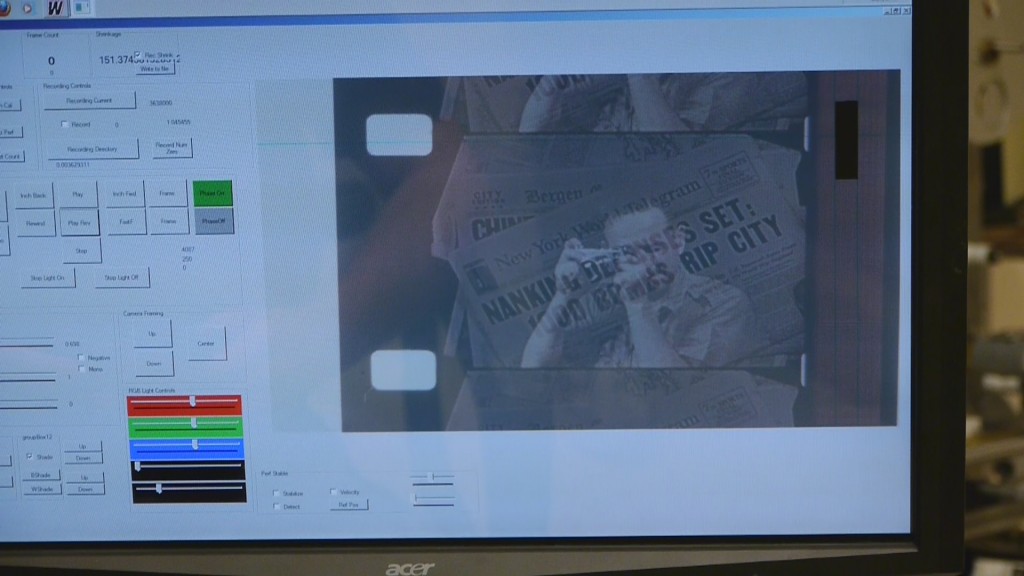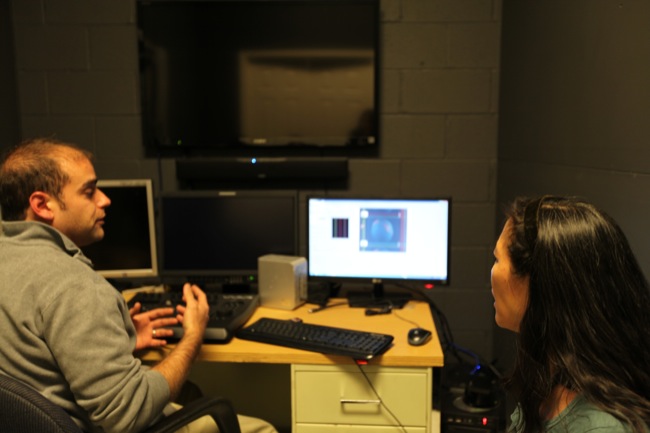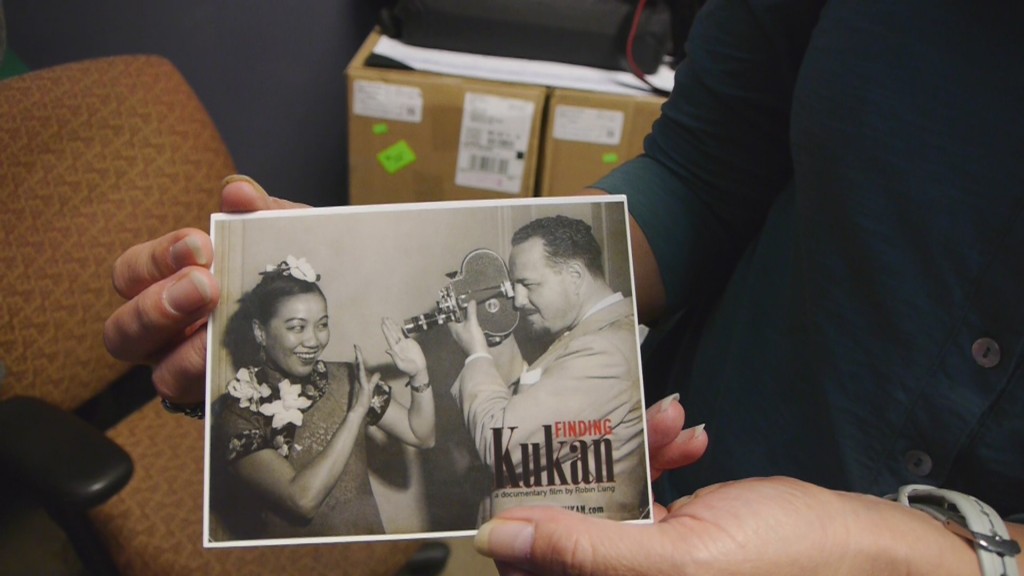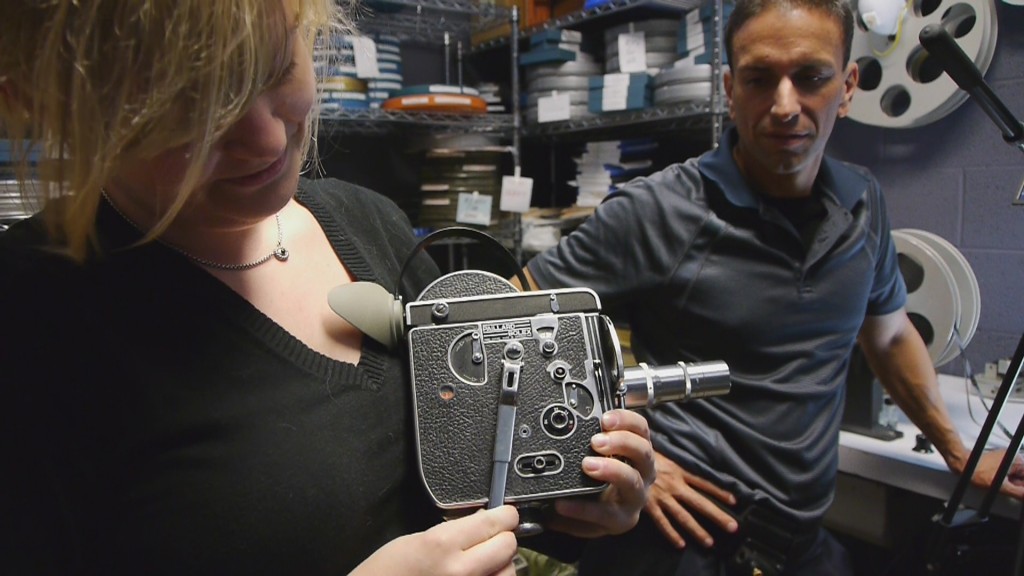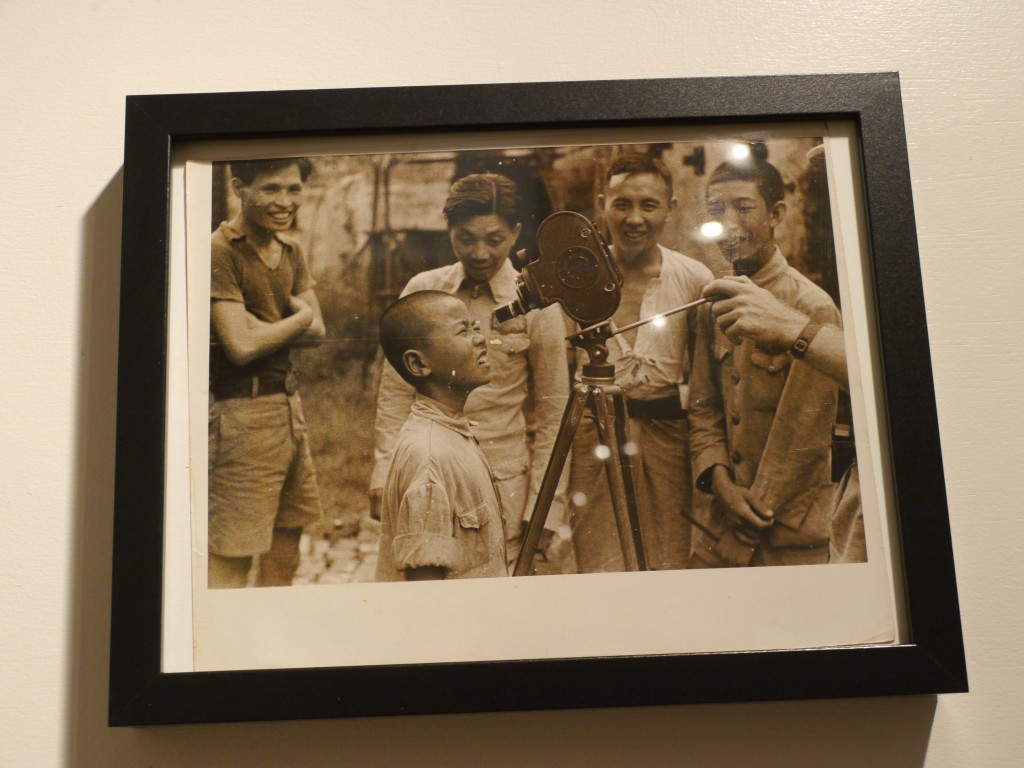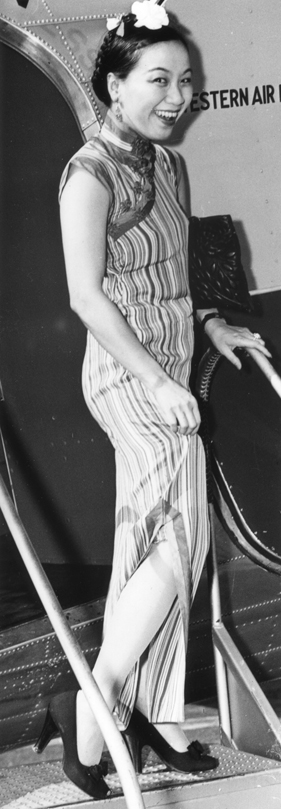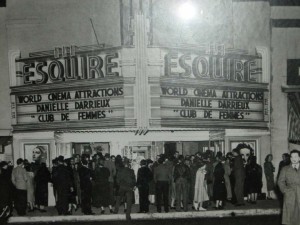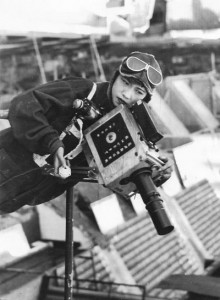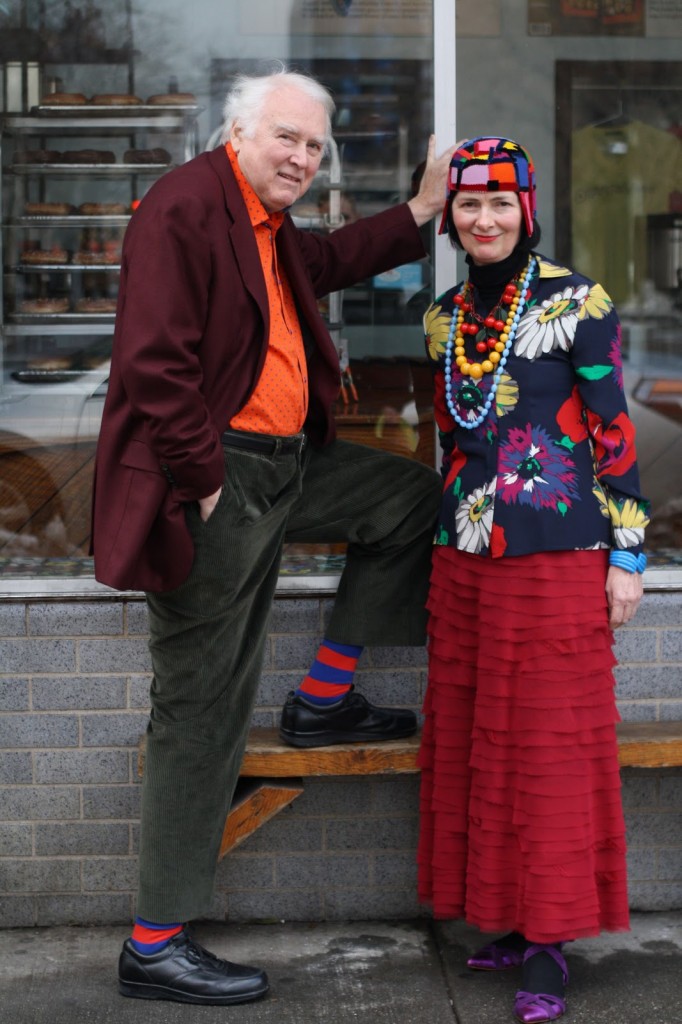Upcoming Screenings:
no event
Follow us on Facebook
HELP BRING FINDING KUKAN TO CLASSROOMS
Sign up for our mailing list.
Tag Archives: lost film
October 8, 2012 — KUKAN Moves from the ER to the Operating Table
Many of you know by now that my documentary FINDING KUKAN revolves around my discovery of the “lost” 1941 Oscar-winning color film of war-torn China called KUKAN. Many of you might also be wondering, where in the H… is KUKAN? If it was found, then why can’t we see it? Well when I tracked down the only full copy of the film it had been sitting in a Fort Lauderdale studio for a few decades and then a Georgia basement for a couple more. Heat and humidity had done its work.
When AMPAS’s Ed Carter and Joe Lindner opened the rusty metal can that contained KUKAN they winced. “Vinegar,” they both said, wrinkling their noses. I learned later that that is a sure sign of deterioration. As Joe examined the 2 reels of film that represented 90-minutes of invaluable color footage of China in 1939 and 1940, he detected both shrinkage and brittleness (more bad signs of deterioration). Joe said he’d seen films worse off…but not many. Things looked pretty grim. If we were in the Emergency Room, this would be time for triage.
Fortunately a deteriorating film takes longer to die than a bleeding human. Two years later, KUKAN has been stabilized but is still in pretty bad shape as you can see by the photos I took of it last week at Colorlab in Maryland where AMPAS sent it to have major restoration work done.
Parts of it are so curled that they will never be able to be re-plasticized (a sort of Botox process for film that hydrates it enough to allow it to lay flat in the scanner without breaking).
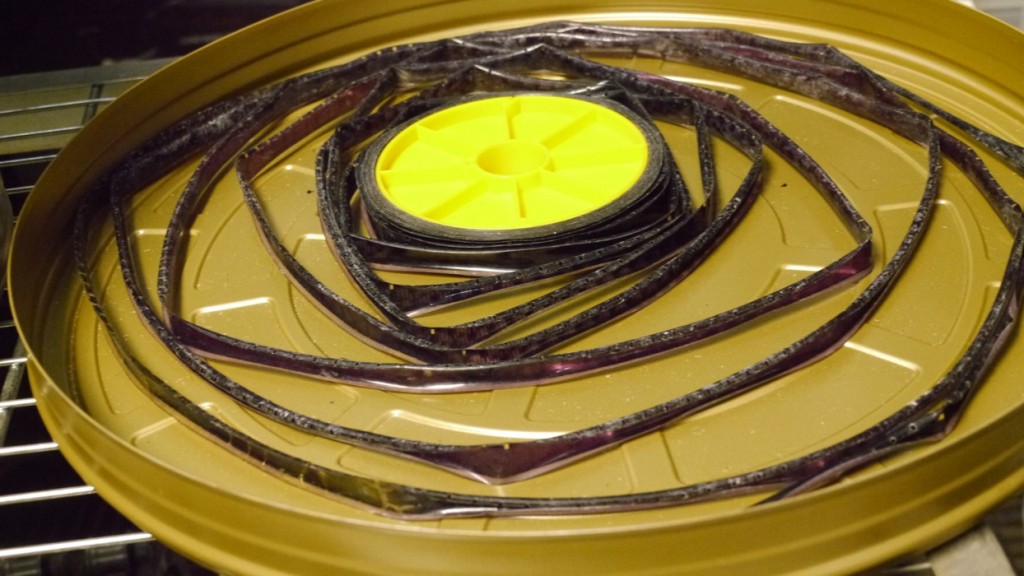
The worst part of the 2 KUKAN reels was so curled it looked like the plastic straws you drink out of.
A partial copy of KUKAN that I located in the National Archives (NARA) will be used to fill in those parts that are unsalvageable. The NARA copy was kept in a temperature controlled environment all these years and is in fairly good shape. But even that has to go through a frame by frame scanning process to pull both image and soundtrack from the 16mm strip.
DP Frank Ayala, 2nd Camera Mia Fernandez and I arrived at Colorlab to film the initial frame by frame scanning of the NARA print and learned a lot about the care and effort needed to bring a film back to life.
A.J. Rohner, head “surgeon” on the KUKAN restoration process, assured me that “my patient” could be saved despite its horrific appearance. He gave us a tour of the monster machine that does the scanning – an invention of Colorlab engineer Tommy Aschenbach.
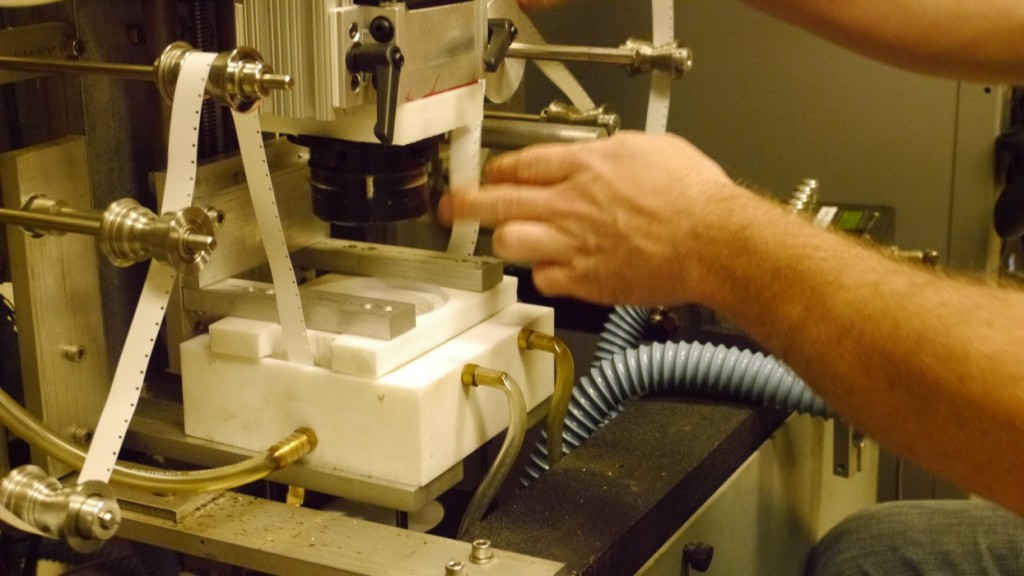
The scanner doing all the work is a fascinating contraption that blinks and whirs and beeps — just like something out of Startrek.
I was entranced by its gorgeous parts, blinking lights and robotic movements — so much more tangibly satisfying to see at work than watching the little gray line creep across your computer screen as your digital footage downloads.
I also learned how the sound from the film will be lifted from the scan, VISUALLY corrected before turning into sound waves and then cleaned and scrubbed to get all the ticks, and hisses out. I was surprised to learn that those little horizontal lines on the edge of the film are what make the sound come alive through the projector – a magical phenomenon when you think about it.
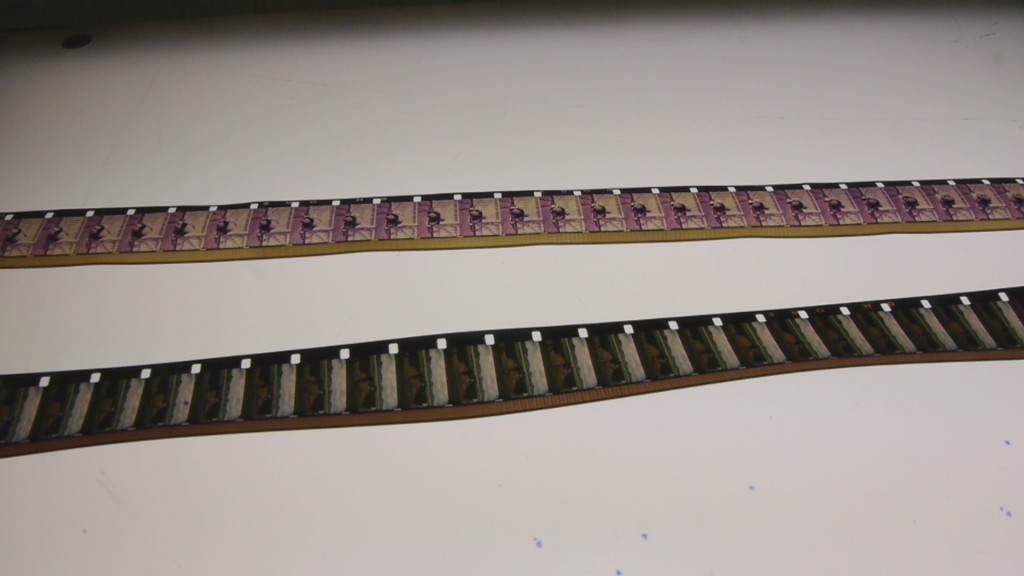
If you look carefully you can see the sound stripes on one edge of the film. The top strip is the badly deteriorated copy of KUKAN I found. Notice the color loss.
From the photo below A.J. identified the camera Rey Scott was using in China as a 16mm Bolex.
Colorlab technician Laura Major just happened to have one in the office that she still shoots with.
Holding that camera in my hands, looking through the tiny viewfinder, and learning that the camera could only shoot 100 ft of film at a time (roughly 2 minutes) gave me a much greater appreciation for Rey Scott’s heroic accomplishment in filming the epic scenes contained in KUKAN, especially the 15-minute sequence at the end of the movie that depicts the massive bombing of Chungking and the fiery destruction of the city.
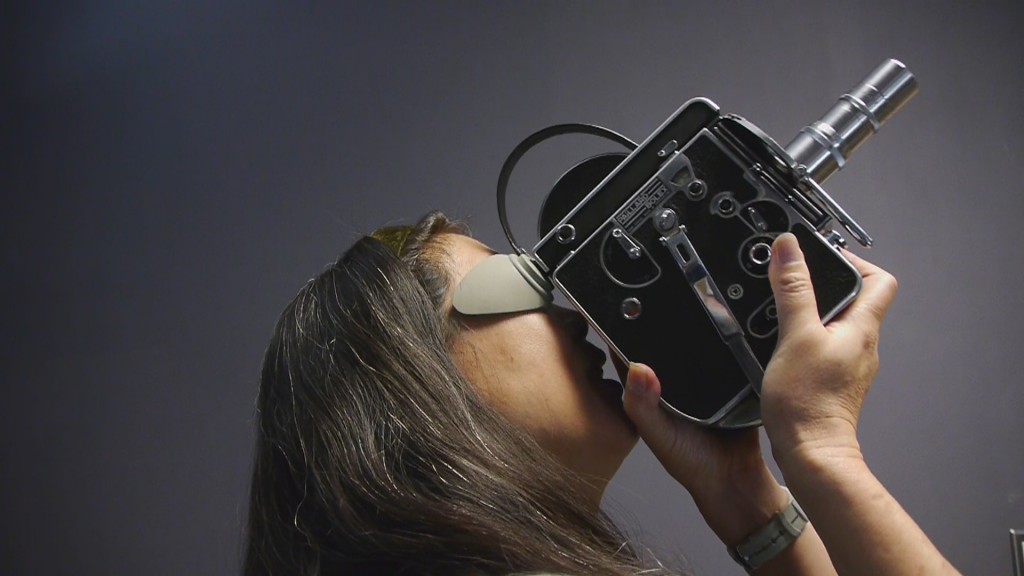
You can’t believe how tiny everything looks through this viewfinder — no wonder Rey had a hard time focusing in places.
I am more determined than ever to reach our $16,000 Kickstarter goal so that we can keep following the magical resuscitation of KUKAN and track the amazing story behind its creation. Please join me on this journey, it’s going to be an incredible ride!
December 5–10, 2011 — LA Production Shoot
My main reason for traveling to LA was to interview Li Ling-Ai’s nephew Andrew Li who was a young boy of 8, living in Nanking when Rey Scott and Li Ling-Ai began pre-production for KUKAN.
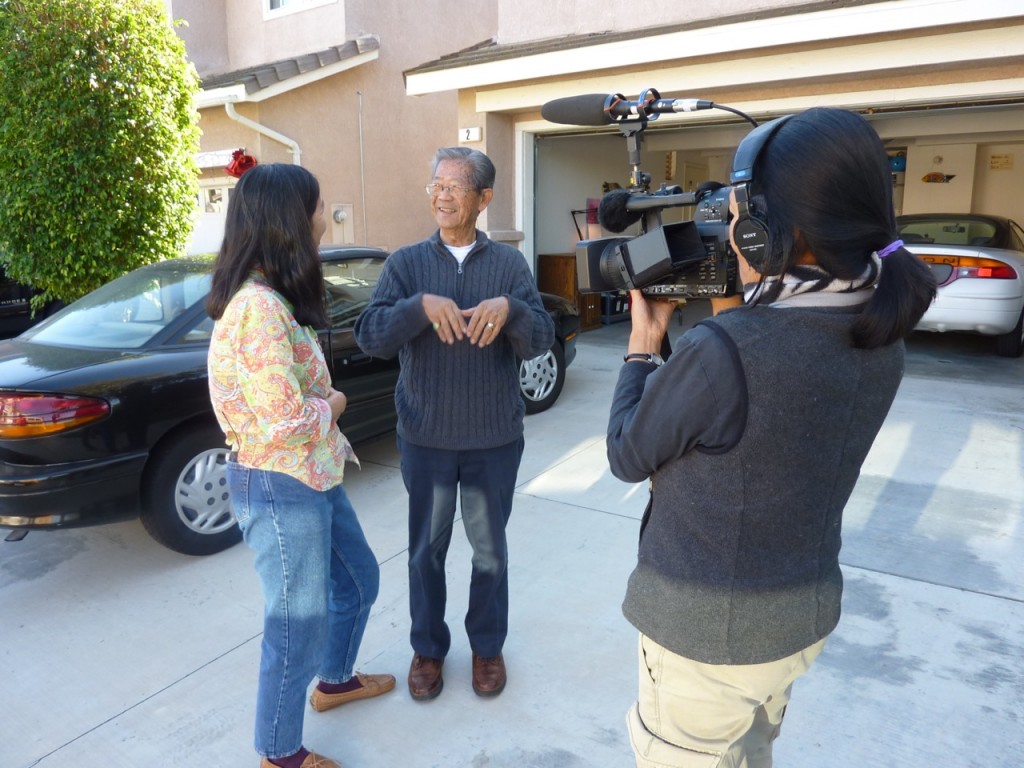
Ann Kaneko films FINDING KUKAN director Robin Lung meeting with Li Ling-Ai’s nephew Andrew Li.
I hoped to find out more information from Andrew about Ling-Ai’s connections in China at the time. Though I was able to gather some valuable information from my interview, the 5 days in LA turned out to be about so much more — a lot of it behind the scenes stuff that will never make it into the documentary.
Getting to know the talented filmmaker Ann Kaneko was one of the unexpected bonuses of the trip. Thanks to generous donations from early FINDING KUKAN supporters, I was able to hire Ann for a couple of days as my LA Director of Photography. Having a dp with a real interest in the project and experience with both editing and being a character in her own films was invaluable.
Witnessing Ann balancing her dedication to her work with the demands of raising her 8‑month old daughter Ceiba was a real inspirational shot-in-the-arm too.
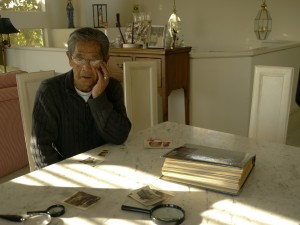
Andrew Li inspects photographs
As I lunched with Andrew Li, his daughters Portia and Quincy, and his wife Gilda I got a sense of the rich life Li Ling-Ai had beyond KUKAN and the profound ripple effect that personal stories can have through time and space.
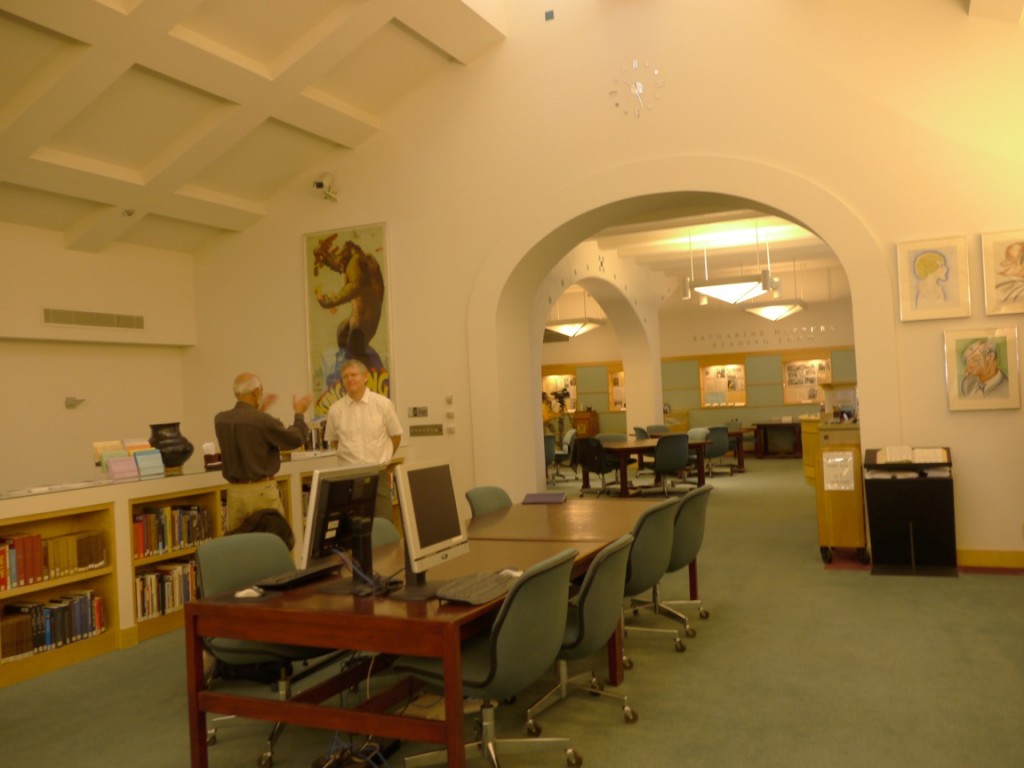
John Zainer talks to Ed Carter in front of the $500,000 King Kong poster that decorates the Margaret Herrick Library’s reading room.
Filming B‑roll scenes of Ed Carter at the Margaret Herrick Library introduced me to this gorgeous building and amazing film history resource for the first time (I am already thinking of excuses to return to spend more leisurely hours there).
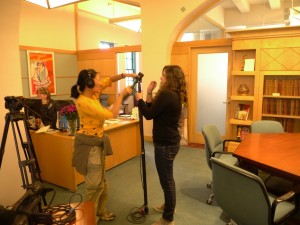
Ann Kaneko and Rebecca Bozzo prep for a shoot at the Margaret Herrick Library
It also gave me an excuse to hook up with the perennially upbeat Rebecca Bozzo again. Becca is a dedicated young filmmaker who shares a passion for old movies and has been a FINDING KUKAN supporter from almost day one.
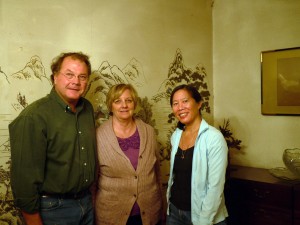
Dan & Denise Levenick with Robin Lung
Dan & Denise Levenick invited me to their home in Pasadena to view their mother’s home movies and photographs of 1930s Hawaii. Besides giving me another reason to marvel at the generosity and kindness of strangers, Dan and Denise provided me with precious “before-my-time” knowledge of my home town.
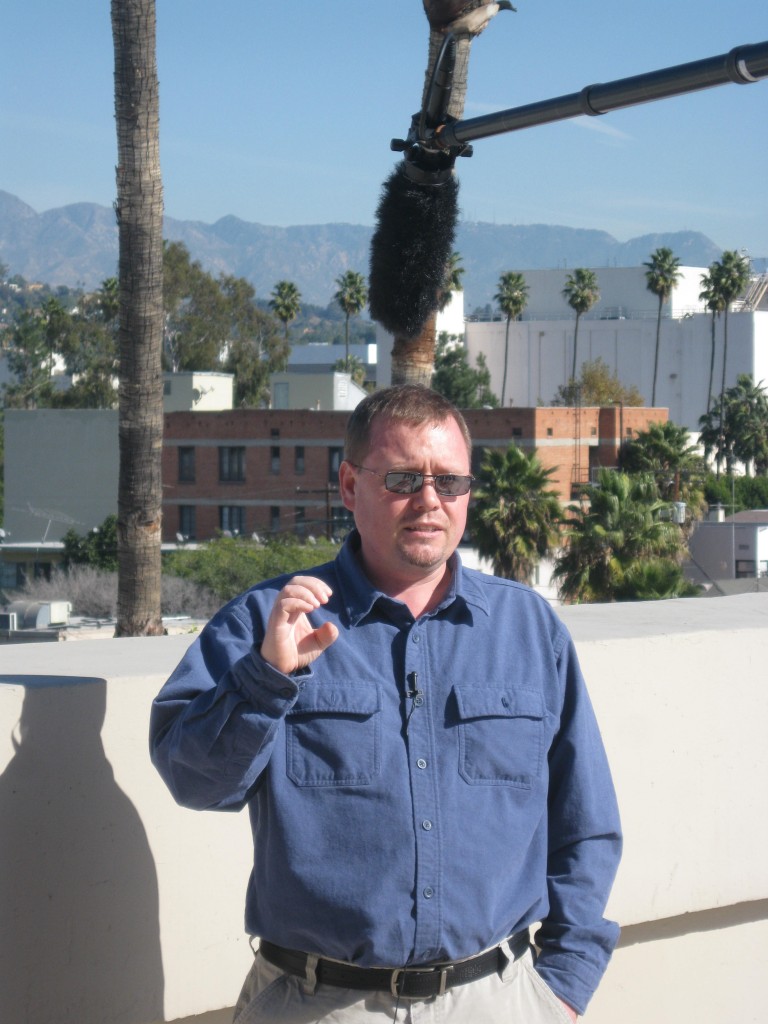
AMPAS Preservationist Joe Lindner describes how curled the KUKAN film print is.
Talking to AMPAS Presrevationist Joe Lindner about the arduous process of restoring KUKAN gave me new insights into the precious nature of old film, the historic value that even old home movies have, and the galling number of films that have been destroyed by time.
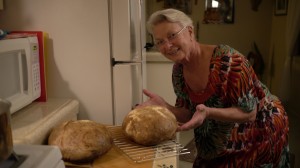
Ille-Heid Zainer and her fresh baked bread.
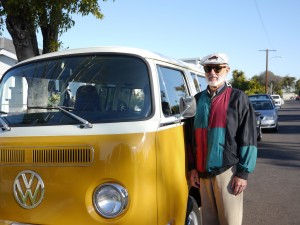
John Zainer’s 1971 VW Van was the perfect LA production vehicle.
Finally my hosts in LA, John and Ille-Heid Zaner, provided me with an intimate view of what living in LA can be like, inviting me to neighborhood parties, providing home-cooked meals after long days of shooting, chauffering me around in vintage vehicles, and sharing Ille’s sister Elke’s amazing Christmas cookies with me.

Elke’s Cookies
The result is that after my 5‑day production shoot in LA, a city that I once had a very low opinion of, I can’t wait to go back.
December 1 to 31, 2011 — Producer/Director Robin Lung Featured on Career Changers TV
Although I’m more comfortable being behind the camera than in front of it, I agreed to be profiled on OC 16’s Career Changers TV show in order to get the word out about FINDING KUKAN. Producer Rich Figel and Cameraman/Editor Stan Chang managed to boil my life of job-hopping down to a succinct 4 minutes or so. Even better, the lead in and out of the piece made people really want to see the work-in-progress trailer and learn more about KUKAN. The show airs through December on digital channel 16 or 1016 in Hawaii. The show is rebroadcast Fri 2:30pm, Sat 6:30pm, Sun 12:30am, Mon 9:00am, and Wed 2pm and Thur 8:30pm through December. If you can’t catch it, here is a low resolution version.
You can see the nice lead up to the trailer here. And a fabulous article Rich wrote about “The Mystery of Li Ling-Ai” here.
December 2, 2011 — Gifts From the Blogosphere
There’s nothing like having a cold over the holidays to make you feel sorry for yourself. It’s that old dejected feeling that creeps in as the box of kleenex gets emptied. Now that I’ve recovered, I’m having some belated Thanksgiving thoughts, tallying up the windfalls that have come my way over the past year — many by way of the internet and blogosphere. Recently I made an internet connection with blogger Durian Dave, who turned out to be a very generous like-minded soul with an incredible visual archive and wealth of knowledge about old Chinese films and film actresses. See his blog and Tumblr for hours of entertaining and eye-opening articles and photos. David advanced my KUKAN research tremendously by sending a bunch of choice KUKAN related items to me, including this vintage lobby card.
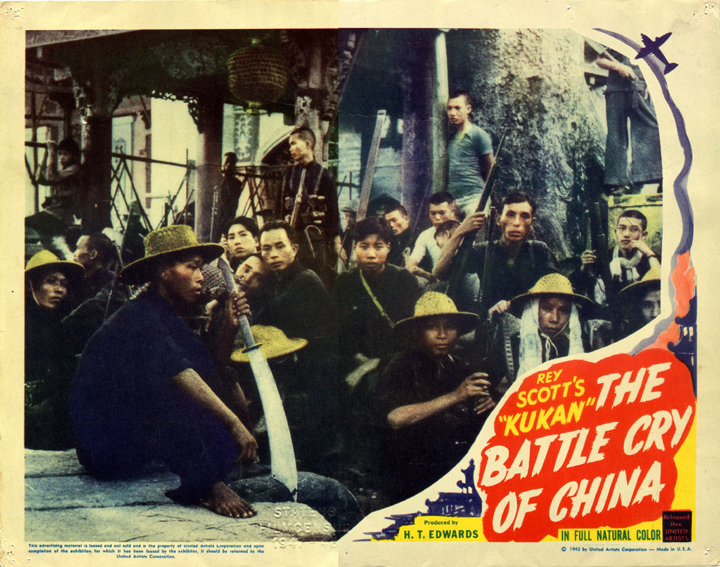
Lobby card for the 1941 Oscar-winning documentary KUKAN
Besides displaying gorgeous color and imagery, the card had an intriguing embossed stamp on the bottom of it: “STATENS FILMCENSUR 1947–48.” David suspects that the stamp refers to Sweden’s censorship board. If he’s right, that means KUKAN screened all the way in Sweden! So if any of you Swedish film collectors come across 16mm Kodachrome color footage of China that appears to be from 1939 or 1940, let me know! We’re still looking for good partial prints to help with the KUKAN restoration.
My next post will feature the fabulous photo of a jet-setting Li Ling-Ai that Durian Dave dug up as well as info about a couple of other groundbreaking Chinese American females working behind the camera. Why not now you might ask. Hey, I’m still recovering!
October 3, 2011 — Crafting Story with Editor Shirley Thompson
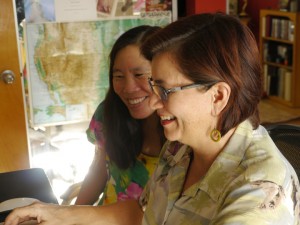
Robin Lung & Shirley Thompson view FINDING KUKAN footage
When I first met Shirley Thompson back in June, I was already a fan of her work and instinctively knew that she would be a great long-format editor for my project. So I was thrilled when, at our next meeting, she voiced enthusiasm for FINDING KUKAN and agreed to edit the project once it got to the post production stage (assuming that schedules, financing, and all the other variables of documentary production work out).
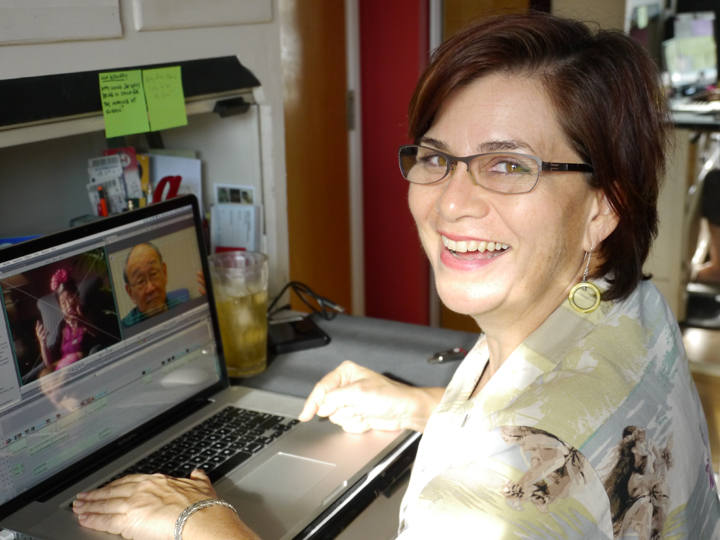
Shirley Thompson edits FINDING KUKAN footage
When I needed an additional few minutes of footage cut for a grant application, I was very thankful that Shirley was available for a few days to help me out. I’m happy to say that my instincts were correct. Not only was Shirley a joy to work with — providing a beautiful, airy workspace; 2 cats to pet; and incredible chocolate snacks — she helped me sort through the small mass of footage I’ve collected so far and turn it into manageable chunks of story that added up to something really exciting.
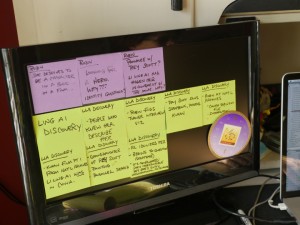
Shirley creates beautiful post-it storyboards to help structure the edit session.
The result was that I was much clearer in my head about the kind of story I wanted to tell with FINDING KUKAN. And I was more confident about what I needed to film next to follow that story.
Shirley really is a story doctor. And I’m more motivated than ever to complete production and get back to the editing room with her. It’s an exhilirating experience.
July 23, 2011 — A Visit to the New York City Office of the National Archives
When I first started checking to see if Li Ling-Ai could have been the real life inspiration for the fictional detective Lily Wu, I tracked down some of her travels through boat records that are available on Ancestry.com. One of the Ancestry records was a New York Exclusion file that listed the date of her arrival in San Francisco. Going over the notes on the record again, I saw that Li Ling-Ai’s file included an interrogation. Since the interrogation occurred only a year before Li Ling-Ai met Rey Scott and conceived of making the movie KUKAN, I was anxious to read through the interrogation to see if it contained any clues. In July I finally got a chance to visit the NYC office of the National Archives where Li Ling-Ai’s Exclusion file is located.
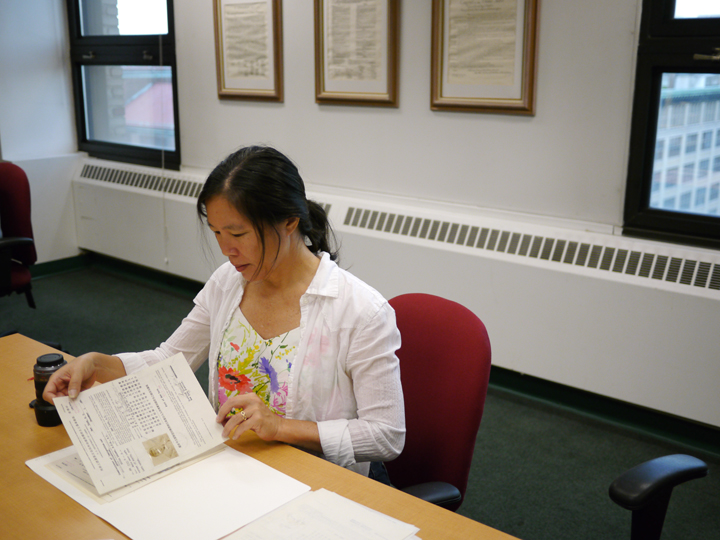
Robin Lung examines Li Ling-Ai’s Chinese Exclusion File at the NYC office of the National Archives
It was amazingly well-preserved, and I had a lot of mixed emotions while examining it. On the one hand, I was excited to see a photograph of Li Ling-Ai in the file that I had never seen before and letters that were hand-written by her. Handling the documents gave me a very visceral connection to the past and to this woman that I have been pursuing for the last couple of years.
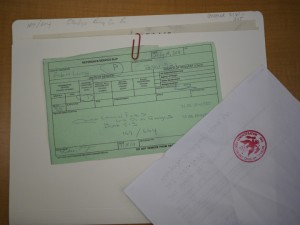
Li Ling-Ai’s Chinese Exclusion File
On the other hand I was appalled that this file existed in the first place. I had to think about the blatant anti-Chinese discrimination that led to The Chinese Exclusion Law — the reason for the creation of the file I was touching. I was astounded that a U.S. citizen like Li Ling-Ai (she was born in Hawai‘i in 1908 when it was already a U.S. Territory) who had a U.S. Passport (documented in the file) would have to spend days at the NYC Immigration Office in order to get a re-entry form that would make it possible for her to come back to her own country after leaving it! And that she would have to sit through an interrogation to prove that she was authentic despite all the other documentation she had made me even more indignant.
As a researcher, I was thankful to be able to access the revealing information in the file and draw both the positive and negative energy from it. So I have to acknowledge the hard work that goes into indexing, storing and retrieving these records. That day at the Archives I witnessed two volunteers who were laboriously going through files and entering data into laptops so that others like me could find information about ancestors and characters from the past. I wish I had gotten their names and taken photos of them if only to pay a small homage to all the others like them who have helped forward my investigation.
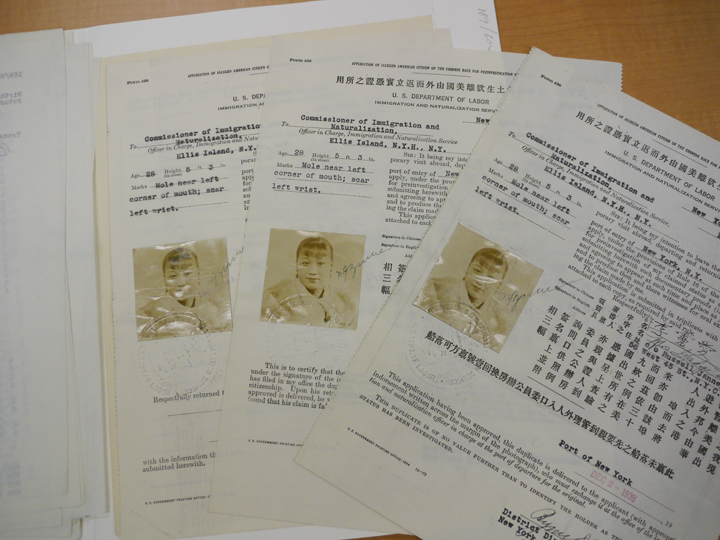
Documents in Li Ling-Ai’s Chinese Exclusion File
July 11–16 Road Trip to Kennesaw & Tallahassee
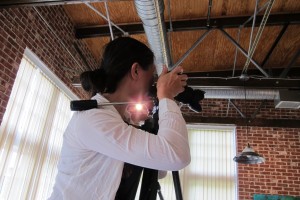
Director Robin Lung films in Georgia
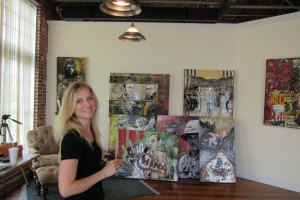
Michelle Scott with a few paintings from her KUKAN series
As I packed my suitcase I worried that since Michelle and I didn’t really know each other the trip could be a total fiasco. Fortunately Michelle and the rest of the Scott family were so openhearted and supportive that I felt instantly comfortable after meeting them and the trip was more successful than I could have imagined. Witnessing Michelle’s passion for her art and her commitment to preserving her grandfather’s legacy infused me with new energy to face all of the tedious things that go along with documentary filmmaking (like logging and transcribing footage and writing grant proposals).

Ray Scott relaxes before interview.
I realize that gaining access to people and places outside of my everyday comfort zone is one of the immeasurable rewards of this process. I’m looking forward to what the next road trip will bring me.
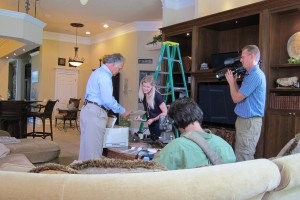
Mark Scott and Michelle Scott examine Rey Scott’s cameras as cameraman Kevin Deyo films the scene.
July 10, 2011 Preparing for an Independent Shoot & Finding a Great Camera Store in NYC
A couple of months ago I purchased a Panasonic GH2 to take on my trip to NYC and Atlanta so that I could shoot some interviews and footage of artist Michelle Scott — the talented granddaughter of KUKAN cameraman Rey Scott. As with most new cameras, it’s a learn as you go and make mistakes process. The second day in NYC, I had my battery go out in a test interview and got a corrupted mts file on the SD card (techie language for a screwup that you do not want to happen during the real thing). I decided I needed an AC adaptor for the camera — that should be easy enough in the big apple shopping capitol, right?
Surprise, surprise, the two biggest camera stores in Manhattan were out of stock. Fortunately, I discovered Alex & Tony at H & B Digital on 46th Street. Not only did they have the part, but they were the sweetest salesmen that I’ve run across in a long time. They patiently looked up how the adaptor worked, let me test it, and then spent almost an hour advising me about filters and giving me a pep talk about doing a shoot on my own — something I have to face when the budget won’t tolerate hiring a larger crew.
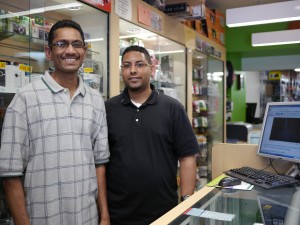
Tony & Alex at H & B Digital
So if you find yourself in NYC with camera needs, check Alex and Tony out on 46th St. They are a small shop, but well-stocked and have great prices too. Most of all they have a passion for photography & filming and seem to love what they do.
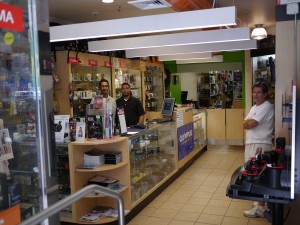
H & B Digital storefront
June 5, 2011 — First Online Funders
What a wonderful surprise to open my email and find a notice from Paypal that the esteemed New York City artists Richard Cramer and Carol Markel had made an online donation to FINDING KUKAN. They are truly an inspirational couple and obvious trend-setters. I hope their ground-breaking generosity will encourage others to take the step.
For a fun peek at this great couple, see Ari Seth Cohen’s blog “Advanced Style”.

